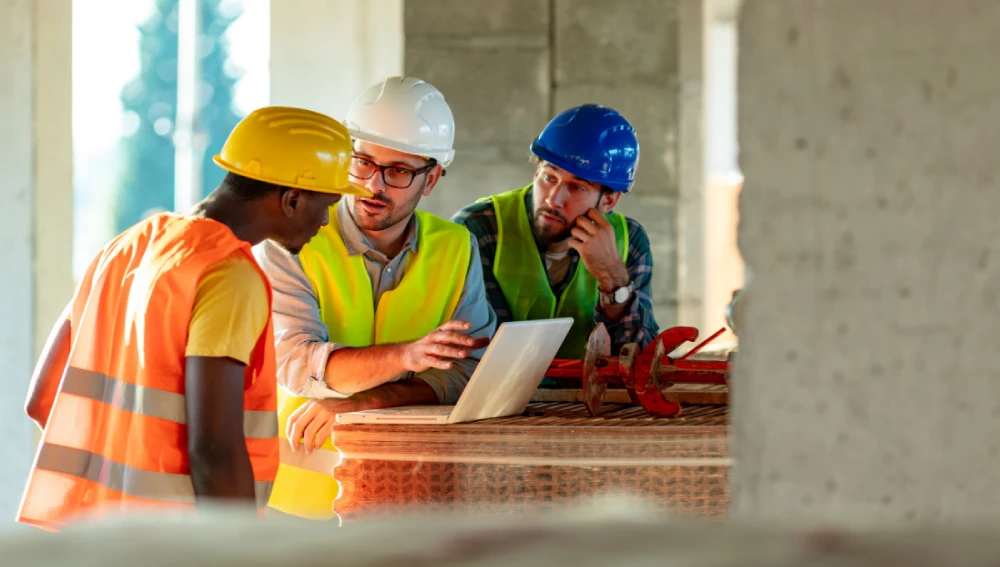Undertaking a construction project requires you to follow certain rules and regulations set by the government. These rules provide contractors with guidelines regarding construction, safety, sustainability, and eco-friendliness.
In this article, we will look into the rules and regulations that contractors should take note of to construct a building safely without any legal complications.
National Building Code of India (NBC)

The NBC of India is known for regulating the construction activities of buildings. It is done across the country with a national instrument. It is established to ensure standards for sustainability, safety, functionality, etc. The NBC of India covers a wide area and focuses on improvements such as:
- Structural safety for earthquakes: Focus on withstanding the seismic force. Buildings are designed to handle wind loads to ensure building resilience.
- Wind Resistance Management: Based on geographic locations, wind load are calculated according to the building heights. This helps prevent the pressure of the wind.
- Fire safety: The code specifies the minimum provision for fire safety. This includes the use of fire-resistant materials. It ensures the provision of fire exits along with the installation of fire alarms.
- Building and structural design: This is based on structural integrity. It ensures that the property can withstand natural disasters. They provide criteria for the construction and design.
- Plumbing service: It ensures safe water delivery for water supply and disposal. It helps to prevent contamination and other health hazards.
- Sanitisation system: The guidelines are fixed for proper sewage disposal and maintenance of toilets.
- Electrical safety: This ensures proper grounding of wires. It also provides guidelines for circuit protection. Safe wiring and installation are major concerns.
- Facility management for disabled people: Standards include ramps, elevators, and accessible toilets. Guidelines support designing spaces. This helps accommodate all types of people.
- Energy-efficient guidelines: It provides guidelines to encourage sustainable practices. It advises making use of technology and efficient materials. This helps in energy consumption.
- Development Rules and Control: It sets standard guidelines for parking, room size, setbacks, etc., to provide uniformity. It also ensures that building projects follow local and national regulations.
State Building Bye-Laws
The ultimate aim of State Building Bye-Laws is to govern building construction and land usage in the state. These laws help in the orderly development of an area. They consider human safety to be a priority. This brings growth to urban areas. This is implemented within each state and its government.
The State Building Bye-Laws focus on providing public health, safety, urban planning, environmental sustainability, and accessibility.
The Tamil Nadu Combined Development and Building Rules, 2019, are a set of regulations introduced. The Tamil Nadu Land Use and Building Construction Act governs land use and construction. These rules help streamline development across the state and focus on bringing uniformity.
Building rules and regulations
Key Components of State Building Bye-Laws
1. Specific Zoning Regulations
The zoning regulations determine what type of building is permitted within a specific area or zone. This provides safety for everyone who works and lives. It has control over the building height and construction according to the usage. They are categorised as residential, commercial, and industrial zones.
- The residential zone is primarily for housing. This concentrates on the people and their well-being. This zone primarily consists of suburban homesteads, family residences, apartments, condos, etc.
- For a commercial zone, the intention is for business. They depend on the height, parking, and FSI. This zone is separate from residential or industrial zones and used for business prospects like offices, retail stores, etc.
- Then comes the industrial zone. It’s for industries and manufacturing units. This is completely out of the city. Its purpose is mainly to ensure safety, control pollution, and manage waste.
2. Building Height Limitations
Building height varies according to the type of zone. This aims to maintain uniformity, ensure ventilation, and prevent overcrowding.
3. Plot Size Requirements
According to the intended use of the buildings, the plot should be designed with adequate space and necessary infrastructure.
4. Setback Distances
These are the minimum distances required between any property or building. This helps provide adequate space, emergency access, and enough ventilation.
5. Floor Space Index (FSI)
The Floor Space Index (FSI) is the ratio of a building’s total build-up floor area to the area of the plot. It varies by zone and property type. It is based on the density and intensity of land use.
6. Fire Safety Measures
State Building Bye-Laws include important fire safety regulations. This includes:
- Installation of fire alarms, and extinguishers.
- Using adequate fire-resistant materials.
- Provision of fire exits and routes for escape
7. Registration of Professionals
Professionals handle the projects under the supervision of the government. This is for maintaining the quality. Many states require architects, contractors, and engineers to be registered and certified.
How do You Get to Know the State-Building Bye-Laws for Your State?

Understanding your state’s specific regulatory framework is essential to understanding the state-building bye-laws.
1. State Building Bye-Laws:
These are a set of rules and regulations established to govern construction, maintenance, and renovation. It is determined by local, national, or regional authorities.
- Government Websites and Portals: Check the official website of your state’s Urban Development Authority or Town and Country Planning Department. These have sections that detail building regulations and bye-laws.
- State Government Portal: Bye-laws are published on e-government portals.
- Physical copies: Libraries and government offices have these copies as a document to which we get access.
2. Zone and Building Type:
The State building Bye-laws vary according to the property types. It is divided into residential, commercial, and industrial zones.
- Residential Zones: Focus on creating a comfortable and pleasing living environment. It depends on the plot sizes, setback distance, density, etc. It fosters community development.
Type: Single-family homes, multi-family residences, apartment complexes, and mixed-use residential areas.
- Commercial Zones: They bring economic growth by supporting business activities. FSI, parking facilities, and infrastructure are all considered. It is used for commercial activities such as retail, offices, hospitality, and services.
Type: Office buildings, retail stores, shopping centers, hotels, and mixed-use commercial areas.
- Industrial Zones: These are designated for manufacturing units and other industrial activities. It concentrates on pollution control, safety standards, buffer zones, etc. It is used for production, storage, and distribution activities.
Type: Factories, warehouses, manufacturing plants, and research and development facilities.
3. Local Authority Consultation:
- Ensures compliance with state and local building regulations.
- Contact town planning or municipal corporation for guidance.
- Discuss parameters such as zoning, building heights, land use, etc.
- Submit the plans for approval. This helps meet safety and environmental standards.
- Consult for infrastructure needs with the public works department.
- Attend public hearings to stay informed about new regulations and community concerns.
Conclusion
These are the rules and regulations you need to follow while undertaking any construction work in India. Whether you are the contractor or client, ensure you check and understand the rules before starting the project.
This will help you avoid any legal complications and ensure a smooth construction. You can also consult a professional if you need a clear understanding of the laws.

